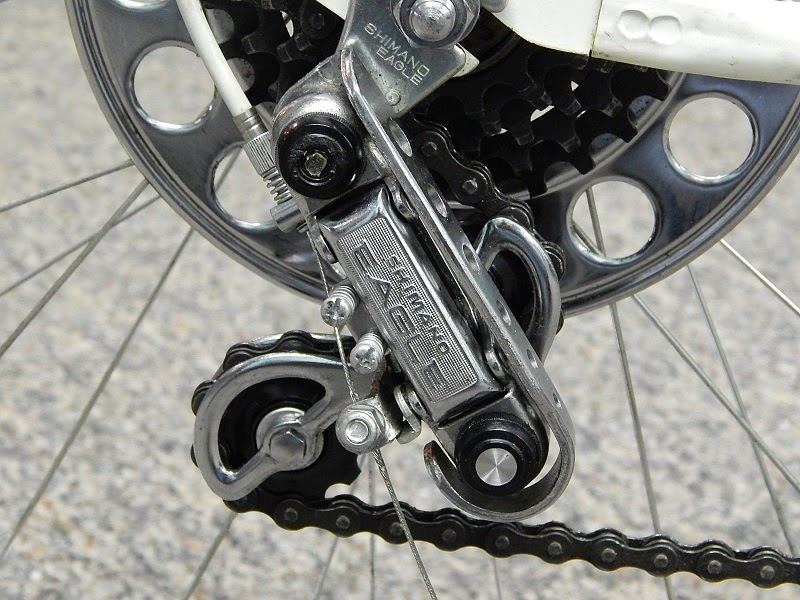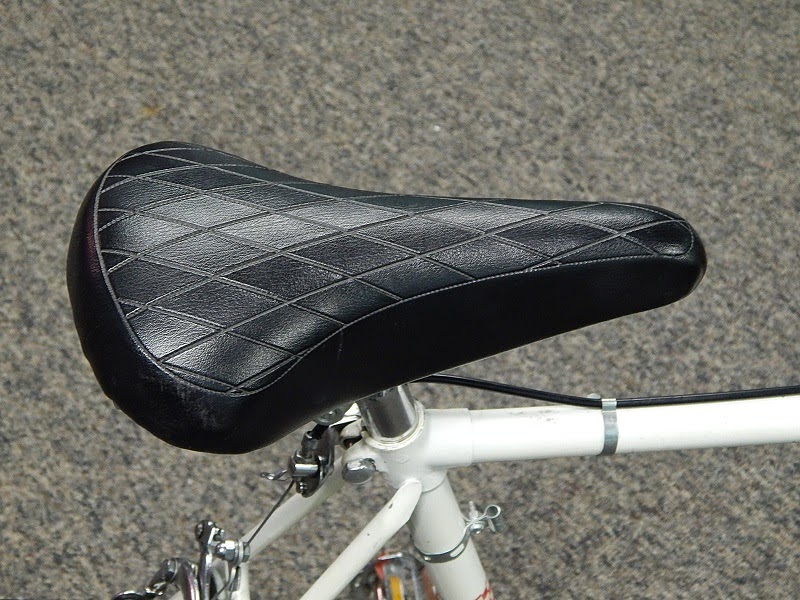Some might be confused about what quality is, so let's define quality: A distinctive attribute or characteristic possessed by someone or something. So quality is not dictated by good or bad; but as much as in right or wrong. For example lets say a designer chooses between expensive titanium bolts, who's quality is hard and brittle; or cheaper grade 5 steel bolts, who's quality is soft and flexible compared to titanium. He chooses the more expensive titanium bolts because he is under the assumption expensive is better, but they break because titanium is very hard and brittle. If he has chose the cheaper grade 5 steel bolts that are softer and flex instead of breaking, then his design would not have failed. We can say his design failed because he picked bolts with poor quality for the job. That was an example of when the lower priced item has more value than the higher priced item.
I've never heard of the Jason brand of bicycle before. I can't find anything about them. As we see in the picture they are made in Japan. Japan is probably not the place you think of when you think quality bicycles; we think of more romantic places such as Italy, France, and England to name a few.
Japan has a rich cycling background. To get themselves out of dept. after World War II, The Japanese raised money from people gambling on bicycles races called "Keirin". These races are held on short tracks called velodromes. Japan currently has over 40 velodromes which is more than any other country in the world. (Italy has about 30, France 13, and England 19 ). So even though Japan isn't the first place we think of when we think bicycles. They certainly have an awesome pedigree.
This model of Jason bicycle is called "Interceptor". I love the checkerboard stylings.
Cherry brand brakes. While I don't know anything about these heavy steel Cherry brand brakes. I do like the attention they gave by putting there name on the pivot bolts. Plus the chrome is holding up well for being over 40 years old.
Would a set of lighter aluminum Dia-Compe center pulls like you would expect to see on a 70's bicycle been better ? Certainly lighter, but what about function? A brake gets it's braking power from the leverage that is generated at the pivots. The closer the brake shoes are to the pivots, the more power you get; the longer the straddle wire is from the pivot, the more power you get. The brake shoes are a lot closer to the pivots than the Dia-compe brakes I've seen. So even though they are heavier, they have a higher mechanical advantage? Less cost/More function.
The first thing that caught my eye when I first saw this bike was the cantilever mounts. At first I thought they might be for some proprietary racks or something.
but as you can see there is a hole for a return spring in the post mounts. I know the standard for cantilever post spacing is 80mm, but these measure 65mm. A little research revealed 65mm was one of the standards for cantilever spacing during this bike production was 65mm.
In case you are wondering, yes they are the same on the back. So this manufacture gives you the ability of using either caliper (thinner tire road), or cantilever (fatter tire, off road) style brakes. This bike is what I call a "Do-All-Too-All".
As for shifters, what else would you expect? Shimano with rubber lever covers.
Also paired with the Shimano, Eagle rear derailleur.
With of course the rear derailleur guard incase you have an accident, or if you are a commuter rear derailleurs seemed to get tweaked sometimes at the community bike rack. A derailleur guard discourages that so to speak.
You have to love the matching read on the chain guard, or just the styling of the chain guard in general. Like the brakes the cranks are made from heavier steel instead of lighter aluminum. I suspect the Interceptor model was on the bottom half of the price list, but the 40 year old straight chainrings suggest they were a great value.
Standard issue 70's road saddle. If you ride a lot, this is one item people tend to personalize. While a lot of people keep the original saddle, a lot of people also change the saddle to one that suits their needs. Not bad though for 40 years old.
Here is knowledge that is lost perhaps. I suspect most of todays young bicycle mechanics, who grew up in the world of clipless pedals, was asked to replace these toe clip straps, they would run them back through without twisting them. The twist prevents the strap from being pulled out when the strap is tighten.
Standard issue steel bars and stem. heavy but very functional.
So how does this 40 year old, entry level, bicycle compare to contemporary bicycles. I suspect this bicycle cost $100-$130 brand new in the 70's. The price of gas was 0.40/gal, milk was $1.20/gal, and a stamp was 0.10 cents. What are they today? Gas $3.30, Milk $3.40, and the stamp is 0.49 cents. So we can say commodities have tripled...quadrupled at best. That fact coordinates with my observation that bicycle manufactures seem to start cutting corners at anything below $350-$400. It's the line that bicycles stop being dependable transportation, and become more toy like, almost ornamental.
One big thing that has changed in the last 40 years on bicycles is the innovations in shifting. They have moved away from "Friction Shifting" to "Index shifting" as it's known. Now you can just move the shift lever and click the bicycle changes gear. Not only that, but the faces of the gears have been engineered so you can shift under load. Its a lot cleaner and crisper when it's adjusted right. Personally my commuter bicycle has friction shifting (Suntour, Power Ratchets). The shifters never have to be synchronized, and the mechanisms last a real long time. For a commuter bicycle I don't see the need for the added expense. If I was racing there is an advantage to the quick and positive, index shifting, but if I'm not racing, then it's something I can do without. While I feel it's fair to say my race bike, cyclo-cross bike, and Mountain bike all have index shifting. I'm just saying once you get used to friction shifting, Index shifting is something you might not value as much.
Entry level bicycles are lighter and shift better than the ones made 40 years ago that's for sure, however I can't say they will last as long. I doubt we see the same proportion of 2014 bicycles in 2054 as we see 1974 bicycles in 2014. The bicycles made today are designed to make a profit, and not outperform the competition for the most part. Then you figure you can probably find a solid bicycle close to the one above for $80- $100....and if you don't like it, you can sell it for probably what you bought it for.
Value is where we find it I guess. I'm just saying don't cast off old things as not having value just because they are old. With the right kind of eyes you can see things that were made with a sense of pride. It's obvious the person who designed the Interceptor had a compass pointing toward performance rather than profit...and that has value.
























